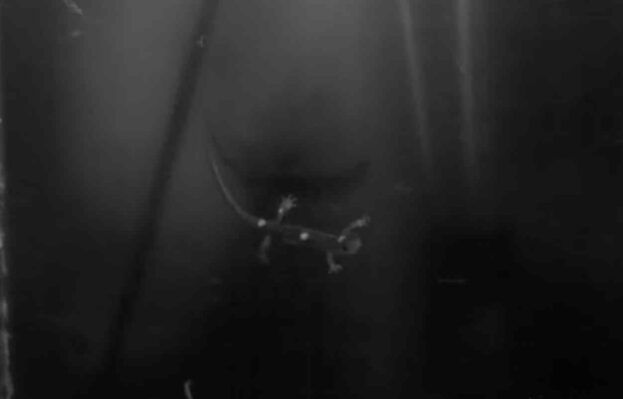News
The Skydiving Salamanders of California
Salamanders in the California redwoods regularly “skydive” off tree canopies. When placed into a mini wind tunnel, they flew just like human skydivers.

[the_ad_placement id=”article-above-content-mobile-only”]
Researchers studying wandering salamanders (Aneides vagrans) have made a thrilling discovery. These four-inch salamanders live in the canopies of the California redwoods (the world’s tallest trees), and use an outstretched skydiving posture, chest held up and arms splayed out, just like a human skydiver, to slow their flights when they jump or fall, either completely to the forest floor or to lower positions in the tree canopy.
The salamanders primarily live in damp fern platforms, approximately 180 to 200 feet off the forest floor. While working with the salamanders in a lab, University of South Florida biologist Christian Brown noticed the salamanders willingly jumped out of his hands with their limbs spread-eagled. “After they jumped, we realized that they assumed this parachuting posture,” he told New Scientist. “They seemed to have control, but, in real time, it’s impossible to tell.”
After deciding against dropping them out of a tree (or building) Brown decided to put the amphibians into a vertical wind tunnel to test their flying prowess, recording the minutea of their movements on a high-powered camera. The results were impressive. “They could not only keep themselves upright,” he said. “They could maneuver, bank turns, and right themselves when they went upside down.”
The researchers were “floored” by the salamanders performance, Brown admitted. As many as 200 species of salamanders are known to live in trees around the world, but scientists have never observed this type of specialized aerial behavior in any salamander. By stretching out their legs, they were able to slow their freefall speed by 10%, and also used their tails as rudders to move horizontally. They often banked turns, tucking in one leg and pivoting around the leg as they flew. “We were shocked by just how adept they are at controlling their aerial behaviours,” Brown said.
The salamanders most likely use this mini-BASE jump to escape from predators, or to land safely in the event of an accidentall fall, but it’s also simply a mode of transportation, Brown suggested. The salamanders may jump down to look for mates, water, or shade. “It’s a mode of transportation,” he told National Geographic, like “taking the gravity elevator.”
Brown and his colleagues put three other species of salamander through the same wind tunnel test, in order to see if the flying skills were limited to wandering salamanders. Arboreal salamanders (Aneides lugubris), speckled black salamanders (Aneides flavipunctatus) and ensatina salamanders (Ensatina eschscholtzii) all flew in the wind tunnel, and while a few of these species managed to pull into a skydiving body position during a few of the trials, every single one of the wandering salamanders did it every single time they were placed in the tunnel.
“This is a fearless, five-gram salamander that climbs the tallest trees on Earth and isn’t afraid to take a leap of faith,” Brown said. “I think that’s inspiring, and I hope other people do, too.”
Will studying these little amphibian friends provide human flyers further insight into the world of bodyflight? Only time will tell.
Published: July 18, 2022 | Last Updated: July 18, 2022
Don’t miss an update!
Join our mailing list for the latest indoor skydiving updates delivered directly to your inbox.
"*" indicates required fields

